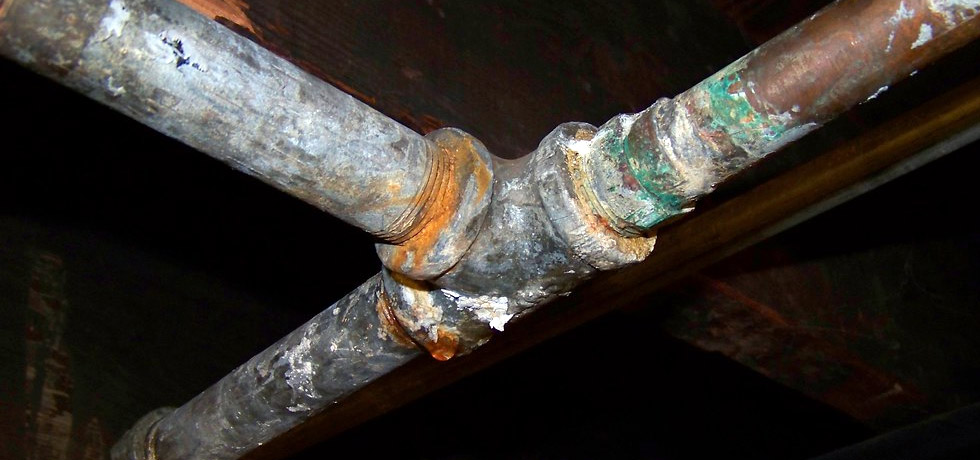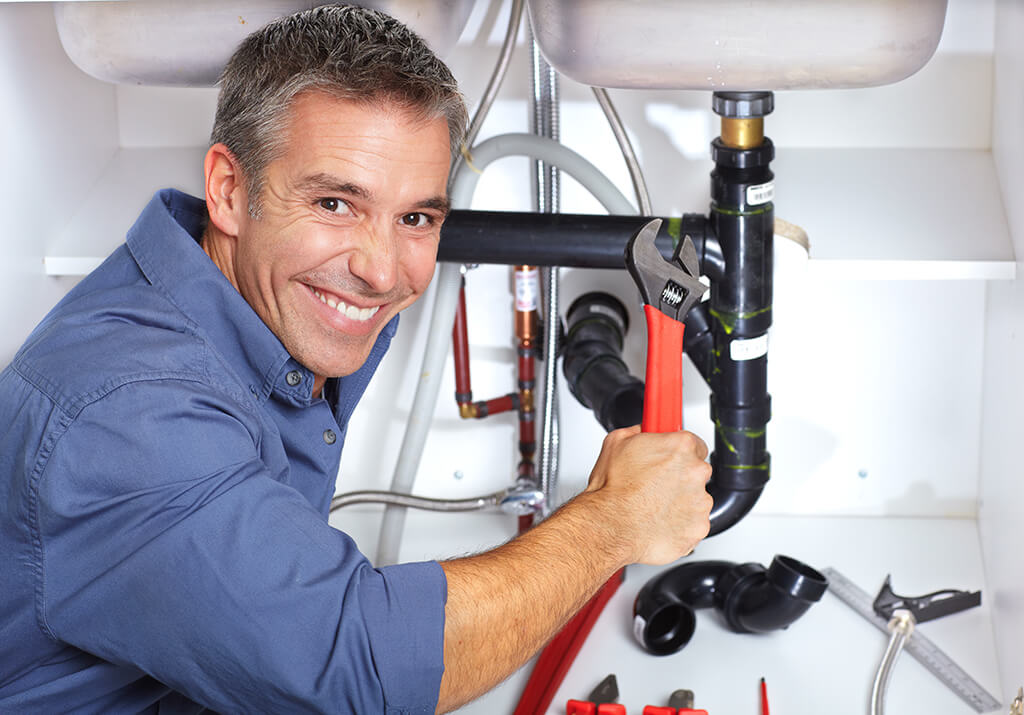Fixing Plumbing Issues in Older Homes: Effective Techniques
Fixing Plumbing Issues in Older Homes: Effective Techniques
Blog Article
Any individual will have their private theory with regards to Plumbing Issues in Older Properties and How to Fix Them.

Older homes typically include charm, character, and background, yet they can likewise bring a host of pipes issues. Whether you're taking care of aging pipelines, low water pressure, or leakages, recognizing exactly how to attend to these typical problems is vital to preserving a secure and practical home. In this overview, we'll check out the regular plumbing obstacles dealt with by older homes and provide functional solutions to maintain your pipes in top form.
Comprehending Usual Plumbing Concerns
Aging Pipes
One of one of the most typical concerns in older homes is aging pipelines. Relying on the age in which your home was constructed, the pipelines might be made from products that have actually degraded over time, such as galvanized steel, cast iron, or perhaps lead. These materials can rust, come to be brittle, or establish leaks, causing water damages and potential health hazards.
Low Tide Pressure
If you're experiencing low tide pressure, it could be due to natural resources, corrosion inside the pipes, or old components that are no more working successfully. This can be a major trouble, especially in locations like showers and sinks.
Leaking Pipes
Leakages are an additional frequent concern in older homes, typically brought on by corroded or worn-out pipelines. Also tiny leaks can result in substantial water damage, mold development, and raised water costs otherwise resolved immediately.
Outdated Fixtures
Out-of-date plumbing components such as taps, toilets, and showerheads not only look old but might additionally be much less reliable, vulnerable to leakages, or incompatible with contemporary pipes requirements.
Pipeline Deterioration
Rust is a typical issue in older pipes, especially those made from galvanized steel or actors iron. Corroded pipes can limit water flow, trigger staining, and at some point result in leakages or pipeline bursts.
Assessing the Problem of Your Pipes
Checking Noticeable Pipelines
Beginning by inspecting any kind of noticeable pipelines in your home, such as those in cellars, crawl spaces, or under sinks. Search for signs of deterioration, leakages, or rust, which can indicate underlying issues.
Checking for Leakages
Check for leaks by checking areas around taps, commodes, and under sinks. You can additionally check your water meter prior to and after a duration of no water utilize to identify covert leaks.
Water Quality Screening
Older pipes can affect the top quality of your water. Conduct a water quality test to check for impurities such as lead, rust, or other contaminations that might be presented by maturing pipelines.
Solutions for Common Pipes Problems
Replacing Aging Pipelines
If your home has old, weakening pipes, take into consideration replacing them with modern products like copper or PEX. This can be a significant investment, yet it will certainly protect against future problems and boost the security and reliability of your pipes system.
Repairing Low Water Stress
To repair low water pressure, start by cleaning or changing old components and getting rid of mineral accumulation in the pipes. If the issue persists, it might be required to replace sections of corroded pipes.
Repairing and Replacing Dripping Pipes
For tiny leaks, you can use pipe clamps or epoxy putty as a momentary solution. Nonetheless, it's best to replace leaking pipes completely to avoid further damage.
Updating Fixtures
Upgrading old fixtures to modern, water-efficient designs can boost your home's plumbing performance and reduce water intake. Search for fixtures with the WaterSense tag for the best efficiency.
Taking Care Of Pipeline Deterioration
If your pipelines are worn away, changing them with corrosion-resistant products like copper, PVC, or PEX is the very best option. Normal evaluations and water quality upkeep can aid protect against additionally rust.
When to Call a Professional
While some plumbing issues can be managed with DIY services, there are times when it's ideal to contact a professional. If you're handling major leaks, substantial deterioration, or are unclear regarding the problem of your pipelines, a qualified plumbing can provide expert evaluation and repair service.
Preventive Maintenance Tips
Routine Evaluations
Frequently evaluate your pipes system for indicators of deterioration. Catching concerns early can prevent costly repair work down the line.
Water Stress Law
Ensure your water pressure is within the advised range to prevent stressing your pipes and fixtures. A plumber can install a pressure regulator if required.
Water Quality Maintenance
Set up water filters or conditioners if your water high quality is poor. This can secure your pipes and fixtures from damages caused by hard water or contaminants.
Positive Pipe Replacement
If your home has very old pipelines, take into consideration proactive replacement before significant problems emerge. This can save you from emergency repairs and water damages.
Verdict
Managing pipes concerns in older homes calls for a mix of watchfulness, preventative upkeep, and prompt upgrades. By comprehending the typical challenges and knowing when to seek specialist aid, you can ensure your plumbing system remains useful and dependable for many years to find.
7 Common Plumbing Issues in Older Homes
Read More Plumbing Articles
Whether you're mulling over purchasing your dream period property, or you already own one, being aware of common plumbing problems in old homes can help you avoid expensive mishaps.
Many plumbing problems in old homes are similar to those faced in newer properties, but some are more prevalent in houses over a certain age. If you've recently bought an old house or haven't had your aging plumbing system inspected in a while, it's worth keeping an eye out for the following issues:
Bad Pipe Materials
Depending on the age of your home, the pipe materials used in your plumbing system may not comply with modern building codes and could be unsafe.
Lead pipes are the most dangerous type of old plumbing pipes. This metal was once used extensively for manufacturing water pipes because it's easy to shape and has a long lifespan. Plumbers also used it to solder joints between pipes made from other materials. However, lead can cause serious health problems, particularly in children. Drinking water from pipes containing lead can lead to lead poisoning symptoms, such as stomach pain and fatigue, so it's essential to replace them if you discover them in your home.
Outdated Fixtures
Even if the previous owners installed high-quality fixtures, these won't be immune to the effects of age and wear and tear. Over time, fixtures can corrode and wear down, increasing the likelihood of leaks and clogs.
Sometimes, an outdated fixture can be a minor irritation that makes using your plumbing system less convenient. However, it's best to maintain older plumbing components carefully and replace them when they show signs of failure to avoid a major leak and water damage.
Corroded or Leaking Pipes
Corroded pipes are a common plumbing issue in old homes. Corrosive substances in the water supply can gradually break down the metal used to make the pipes, eventually causing leaks. Corrosion can also cause sediment to build up, increasing the chances of a clogged pipe. All these issues take time to develop, making them more likely in old house plumbing.
Drain Problems
Older home drainage systems were often installed before the arrival of appliances such as garbage disposals, so they're frequently incapable of handling modern household usage. The result could be frequent clogs or water backing up into sinks and other fixtures.
A failing sewer line is the most serious drainage issue commonly encountered in old houses. This problem is more likely if you've remodeled your home to add more fixtures, placing more pressure on a sewer line not designed for the purpose. Eventually, the line can become clogged, causing unpleasant indoor smells, poor drainage and contaminated wastewater backing up into your fixtures.
Pipe Bellies
Pipe bellies develop when pipes buried in your home's foundation start sagging as the building settles. They create downward slopes, affecting water drainage and increasing the risk of significant blockages. You don't need to worry about pipe bellies in a pressurized main line, as the water pressure prevents the pipes from clogging, but they can cause issues in drain lines.
Root Intrusion
Root intrusion occurs when trees and other shrubs grow roots too close to your sewer line or water service line. Sometimes, the roots penetrate the pipe walls, leading to leaks and soft or wet areas in your yard.
Unfortunately, root intrusion is a more common plumbing problem in old homes. That's because older houses are more likely to have pipe bellies allowing standing water to accumulate, attracting roots to the moist conditions.
https://www.elocal.com/resources/home-improvement/plumbing/faq/plumbing-issues-in-older-homes/

Do you appreciate reading about Common Plumbing Problems in Older Homes? Leave feedback below. We'd be glad to see your insights about this piece. Hoping that you visit us again in the near future. Are you aware of somebody else who is inquisitive about Common Plumbing Problems in Older Homes? Be sure share it. I praise you for your time. Don't forget to come by our site back soon.
Schedule Appointment Now Report this page